Description
Yamaha 9.9 HP F9.9SMHB2: The Smart Choice for Portable Marine Power
Here’s a controversial truth that most boat dealers won’t tell you: you don’t need to spend $5,000+ on a small outboard motor to get reliable, professional-grade performance. While manufacturers push expensive flagship models, the Yamaha 9.9 HP F9.9SMHB2 delivers everything most boaters actually need at a fraction of the cost. This compact powerhouse has quietly become the go-to choice for experienced captains who prioritize substance over marketing hype.
Whether you’re powering a fishing dinghy, backing up your main engine, or need reliable propulsion for weekend adventures, the F9.9SMHB2 represents exceptional value in today’s inflated outboard market. This comprehensive guide reveals why this particular model consistently outperforms more expensive alternatives and how you can leverage its capabilities for your specific boating needs.
We’ll explore everything from technical specifications to real-world performance, helping you make an informed decision about whether this motor deserves a place on your transom. Plus, we’ll share insights on where to find quality used outboard motors and compare this model against key competitors from Honda and Mercury.
What is the Yamaha 9.9 HP F9.9SMHB2?
The Yamaha F9.9SMHB2 represents the latest evolution in Yamaha’s popular 9.9 horsepower portable outboard series. This four-stroke, twin-cylinder marine engine combines proven reliability with modern efficiency in a compact 87-pound package that’s designed for serious boaters who demand dependable performance without unnecessary complexity.
At its core lies a sophisticated 212cc, SOHC (Single Overhead Cam) twin-cylinder powerplant that generates 9.9 horsepower at 5,500 RPM. Unlike many competitors that rely on single-cylinder designs, this twin-cylinder architecture delivers smoother operation, better vibration control, and more consistent power delivery across the entire RPM range.
The “SMHB2” designation breaks down into specific configuration details: “S” indicates short shaft (15 inches), “M” denotes manual start, “H” represents the handle (tiller) steering system, and “B2” refers to the latest generation with updated ergonomics and improved fuel efficiency. This specific configuration makes it ideal for smaller boats, dinghies, and applications where portable outboard motors need to be frequently transported or stored.
What sets this motor apart from budget alternatives is Yamaha’s commitment to long-term reliability. The engine block features a cast-iron cylinder sleeve design that provides superior durability compared to aluminum-only construction found in cheaper motors. The carburetor system uses Yamaha’s proven float-bowl design with automatic enrichment, eliminating the starting problems common in many small four-stroke engines.
The Yamaha F9.9SMHB2 also incorporates several practical design elements that demonstrate Yamaha’s understanding of real-world use. The motor features integrated carrying handles, protective rubber bumpers for transport, and a fold-down bracket system that allows for compact storage. These aren’t just convenience features – they’re essential capabilities for boaters who need to regularly move their motor between boats, vehicles, and storage areas.
Why the Yamaha F9.9SMHB2 Matters
In today’s marine market flooded with over-engineered and overpriced alternatives, the Yamaha F9.9SMHB2 stands as a testament to focused engineering that solves real problems without unnecessary complexity. This motor matters because it delivers professional-grade reliability at a price point that makes boating accessible to enthusiasts who refuse to compromise on quality.
Fuel Efficiency That Actually Matters
While larger outboards grab headlines with horsepower claims, the F9.9SMHB2 excels where it counts most for small boat operations: fuel consumption. Independent testing shows this motor achieves approximately 1.2 gallons per hour at cruising speed, translating to over 8 miles per gallon in typical dinghy applications. For comparison, many comparable two-stroke motors consume 40-50% more fuel while producing equivalent thrust.
Proven Durability Statistics
Yamaha’s internal reliability data shows the F9.9SMHB2 series maintaining 95% operational availability after 500 hours of use when properly maintained. This isn’t marketing fluff – it’s data compiled from thousands of motors across diverse marine environments. Many boaters report motors running strong after 1,000+ hours with only routine maintenance, making this one of the most cost-effective propulsion investments in the marine industry.
Environmental Compliance Without Compromise
Unlike two-stroke alternatives that face increasing regulatory pressure, the F9.9SMHB2’s four-stroke design meets all current EPA emissions standards while producing 75% fewer hydrocarbons than equivalent two-stroke motors. This environmental compliance isn’t just good citizenship – it’s future-proofing your investment against evolving marine regulations.
The motor’s impact extends beyond individual boat owners. Charter operators and sailing schools have increasingly adopted similar Yamaha 9.9 motors because their combination of reliability, efficiency, and ease of maintenance reduces operational costs while maintaining the performance standards their customers expect. This commercial validation provides strong evidence of the motor’s real-world capabilities.
Yamaha F9.9SMHB2 Specifications
Engine Configuration
- Engine Type: 2-cylinder, SOHC, Four-stroke
- Displacement: 212cc (12.9 cubic inches)
- Bore x Stroke: 60mm x 37.5mm
- Horsepower: 9.9 HP @ 5,500 RPM (Propeller Shaft HP)
- Maximum RPM: 5,500-6,500 RPM
- Fuel System: Carburetor with automatic enrichment
- Ignition: CDI (Capacitive Discharge Ignition)
- Starting System: Manual recoil start
- Oil Capacity: 1.1 liters (1.16 quarts)
- Cooling System: Water-cooled with thermostat
Physical Dimensions & Weight
- Dry Weight: 87 lbs (39.5 kg)
- Shaft Length: 15 inches (381mm) – Short Shaft
- Overall Dimensions: 26.8″ L x 13.8″ W x 38.1″ H
- Transom Height: 15 inches (suitable for most small boats)
- Propeller: 3-blade aluminum, 9.25″ x 9″ pitch (standard)
Control & Operation Features
- Steering: Tiller handle with 360-degree rotation
- Throttle Control: Twist grip throttle on tiller handle
- Gear Shifting: Forward-Neutral-Reverse via tiller-mounted lever
- Trim Range: Manual tilt with 6 position shallow water drive
- Fuel Tank: Portable 3.2-gallon external tank (included)
- Fuel Line: Standard 3/8″ fuel line with primer bulb
Performance Specifications
- Fuel Consumption: Approximately 1.2 GPH at cruising speed
- Speed Range: 8-15 mph depending on boat weight and hull design
- Thrust Rating: Optimized for boats up to 1,200 lbs
- Operating Range: Fresh and salt water capable
- Recommended Oil: Yamaha 4-stroke marine oil (10W-30 or 10W-40)
How to Choose and Operate the Yamaha F9.9SMHB2
Step 1: Determine Compatibility with Your Boat
Before committing to the F9.9SMHB2, verify your boat’s transom specifications match the motor’s requirements. The 15-inch short shaft design works best with transoms measuring 15-16 inches in height. Most small boats, dinghies, and tenders fall into this category, but some larger boats may require long shaft alternatives for proper water intake and propeller depth.
Check your boat’s maximum horsepower rating, typically found on the capacity plate near the helm. The F9.9SMHB2’s 9.9 HP output provides excellent performance on boats rated for 9.9-25 HP, offering enough power for plane-capable hulls while maintaining excellent fuel efficiency and handling characteristics.
Step 2: Proper Installation Process
Mount the motor using appropriate transom clamps, ensuring the cavitation plate sits 0-1 inch below the boat’s hull bottom. This positioning optimizes water flow to the propeller while preventing cavitation that reduces performance and increases fuel consumption. Tighten clamps to manufacturer specifications – typically 25-30 foot-pounds of torque.
Connect the fuel line with attention to proper routing that avoids sharp edges or pinch points. Install the fuel tank in a secure, ventilated location away from ignition sources. Prime the fuel system using the primer bulb until it feels firm, indicating fuel has reached the carburetor.
Step 3: Starting and Break-In Procedures
Initial Start-Up:
- Ensure the motor is in neutral position
- Open fuel valve and prime fuel line until bulb feels firm
- Set throttle to start position (slight advancement from idle)
- Pull starter cord with smooth, firm motion
- Allow engine to warm up for 2-3 minutes before operation
Critical Break-In Protocol (First 10 Hours):
- Vary RPMs between 2,000-4,000 (avoid constant RPM operation)
- Perform initial oil change after 10 hours of operation
- Monitor engine temperature and oil level frequently
- Avoid maximum throttle operation during break-in period
Step 4: Optimizing Performance Settings
Adjust the motor’s trim position based on boat load and sea conditions. For light loads and calm water, trim the motor slightly up to reduce drag and improve fuel efficiency. In rough conditions or with heavy loads, trim down for better bite and control.
The Yamaha F9.9SMHB2’s tiller handle offers 360-degree rotation, allowing optimal positioning for comfortable operation regardless of your boat’s seating arrangement. Set throttle friction to provide smooth control without excessive resistance – typically 2-3 turns of the friction screw from fully loose.
Step 5: Advanced Operation Techniques
Master the art of shifting between forward, neutral, and reverse with smooth, deliberate movements. The Yamaha F9.9SMHB2’s gear system requires complete RPM reduction to idle before shifting to prevent transmission damage and ensure smooth engagement.
For maximum efficiency, operate the motor between 3,500-4,500 RPM under normal conditions. This range provides optimal fuel consumption while maintaining adequate power for most applications. Full throttle operation should be reserved for emergency situations or when maximum performance is temporarily required.
Pro Tip: Consider upgrading to a higher performance propeller if your typical operating conditions involve consistent heavy loads or if you desire improved acceleration characteristics.
Types of Applications for the Yamaha F9.9SMHB2
Primary Propulsion Applications
Small Fishing Boats and Dinghies: The Yamaha F9.9SMHB2 excels as primary propulsion for boats in the 10-14 foot range. Its twin-cylinder design provides smooth trolling capabilities essential for serious fishing, while delivering sufficient power to reach planning speeds with reasonable loads. The motor’s quiet operation won’t spook fish, making it ideal for both freshwater bass fishing and saltwater applications.
Sailing Yacht Auxiliaries: Many sailing yacht owners choose the F9.9SMHB2 as auxiliary propulsion because its compact size and reliable starting characteristics provide confidence during challenging conditions. The motor’s fuel efficiency allows for extended motoring when winds are unfavorable, while the manual start system eliminates battery dependency concerns common with electric start models.
Secondary and Emergency Use
Backup Motor Applications: Experienced boaters understand the value of redundancy. The F9.9SMHB2 serves as an excellent backup motor for larger boats, providing sufficient power to return to port safely if the main engine fails. Its portable design allows for easy storage in lazarettes or dedicated motor wells without consuming excessive space.
Tender and Dinghy Service: For yacht owners who regularly use tenders for shore access, the Yamaha F9.9SMHB2 offers the perfect balance of power and portability. The motor provides sufficient speed for efficient trips while remaining light enough for single-person handling during deployment and retrieval operations.
Commercial and Professional Applications
Charter and Rental Operations: Many charter operations have adopted the Yamaha F9.9SMHB2 for their dinghy fleets because of its combination of reliability, ease of maintenance, and user-friendly operation. The motor’s proven durability reduces operational costs while its straightforward controls make it suitable for operators with varying experience levels.
Work Boat and Utility Applications: Harbor masters, marina operators, and waterfront businesses often choose this motor for utility boats used in daily operations. Its dependable starting, efficient operation, and ability to handle frequent start/stop cycles make it ideal for boats that see constant use in challenging marine environments.
Research and Survey Work: Marine researchers and surveyors appreciate the F9.9SMHB2’s quiet operation and precise throttle control for detailed work requiring slow-speed maneuvering. The motor’s reliability ensures that expensive research time isn’t lost due to mechanical failures in remote locations.
Consider exploring 8 HP alternatives for ultra-light applications or 15 HP upgrades when additional power is required for your specific application.
Advanced Strategies for Yamaha F9.9SMHB2 Owners
Performance Optimization Techniques
Propeller Selection Strategy: While the standard aluminum propeller works well for general applications, strategic propeller changes can dramatically improve performance for specific use cases. A stainless steel propeller with the same pitch provides better bite and durability for frequent use, while a lower-pitch propeller (8.5″ instead of 9″) improves acceleration and low-speed control for heavy-load applications.
Experienced operators often maintain two propellers: a standard 9″ pitch for general use and an 8″ pitch for heavy loads or when maximum low-end torque is required. This strategy maximizes the motor’s versatility across different operating conditions without requiring permanent modifications.
Fuel System Modifications: Consider upgrading to a 6-gallon fuel tank for extended-range applications. The larger tank reduces refueling frequency while the additional weight low in the boat can improve stability. Install a fuel/water separator filter between the tank and motor to protect the carburetor from contaminated fuel – a common cause of operational problems in marine environments.
Advanced Maintenance Protocols
Predictive Maintenance Techniques: Beyond standard maintenance schedules, implement condition-based monitoring for critical components. Check spark plug condition every 25 hours to identify combustion issues before they affect performance. Monitor fuel consumption rates to detect carburetor drift or developing mechanical problems.
Maintain detailed operational logs including hours, fuel consumption, and performance metrics. This data helps identify developing problems and optimizes maintenance timing based on actual use patterns rather than arbitrary schedules.
Winterization and Long-Term Storage: For seasonal users, proper winterization extends motor life significantly. Use fuel stabilizer in the last tank before storage, run the motor until it reaches operating temperature to ensure treated fuel circulates through the system, then fog the cylinders with specialized marine engine oil.
Remove the motor from the boat for winter storage when possible, allowing for complete drainage and preventing freeze damage to internal components. Store the motor in an upright position to prevent oil migration and maintain proper internal lubrication distribution.
Performance Monitoring and Troubleshooting
Real-Time Performance Assessment: Develop sensitivity to your motor’s normal operational characteristics. Changes in vibration patterns, throttle response, or fuel consumption often indicate developing problems before they cause failures. The Yamaha F9.9SMHB2’s twin-cylinder design makes it particularly sensitive to carburetor synchronization issues that affect smooth operation.
Advanced Troubleshooting Techniques: Understand the relationship between common symptoms and their underlying causes. Hard starting often indicates fuel system problems or spark plug deterioration. Reduced top-end power usually suggests propeller damage, carburetor issues, or compression loss. Irregular idle typically indicates carburetor adjustment needs or air leak problems.
Keep a basic toolkit and spare parts inventory including spark plugs, fuel line, and carburetor cleaning supplies. These items enable field repairs that can save expensive downtime or towing costs when operating away from marine facilities.
For boaters seeking additional power, consider exploring used higher-horsepower alternatives that provide more performance while maintaining similar operational characteristics and maintenance requirements.
Common Mistakes to Avoid with the Yamaha F9.9SMHB2
Fuel System Errors That Cost Money
The Ethanol Trap: Many Yamaha F9.9SMHB2 owners unknowingly damage their motors by using E15 or higher ethanol-blend fuels. While the motor can technically run on E10, higher ethanol concentrations cause carburetor corrosion, fuel line deterioration, and gasket swelling that leads to expensive repairs. Always use E10 or less, and consider ethanol-free fuel for maximum longevity.
Fuel Storage Mistakes: Storing fuel for extended periods without stabilizer causes gum formation that clogs carburetor jets and fuel passages. This seemingly minor oversight often results in $200-400 carburetor rebuild costs that could be prevented with $5 worth of fuel stabilizer. Even worse, many owners attempt to clear clogs with aggressive solvents that damage rubber components and create more expensive problems.
Ignoring the Primer Bulb: Failing to prime the fuel system properly before starting leads to hard starting, rough operation, and unnecessary wear on starter components. A firm primer bulb indicates adequate fuel pressure – a soft bulb means air in the system that can cause lean operation and potential engine damage.
Installation and Setup Blunders
Transom Height Miscalculations: Mounting the motor too high reduces water pump efficiency and can cause overheating, while mounting too low creates unnecessary drag and reduces performance. The cavitation plate should sit 0-1 inches below the hull bottom – measure carefully rather than guessing. Incorrect installation often requires professional assessment to prevent long-term damage.
Propeller Selection Errors: Using an incorrect propeller pitch prevents the engine from reaching proper operating RPM, causing poor fuel economy, reduced performance, and potential internal damage. The motor should reach 5,500-6,500 RPM at full throttle with normal load – if it doesn’t, you need propeller adjustment rather than engine modification.
Ignoring Weight Distribution: Placing the motor too far to one side creates handling problems and increases fuel consumption. Center the motor on the transom and ensure proper weight distribution throughout the boat to optimize performance and safety.
Maintenance and Operation Oversights
Oil Change Procrastination: The Yamaha F9.9SMHB2’s compact design means oil degradation occurs faster than in larger motors due to higher operating temperatures relative to oil volume. Extending oil change intervals beyond 50 hours or one season (whichever comes first) leads to accelerated wear and potential seizure. Fresh oil is cheap – engine rebuilds are not.
Cooling System Neglect: Failing to flush the cooling system after saltwater use allows salt crystal formation that restricts water passages and causes overheating. Even a 5-minute freshwater flush after each use prevents 90% of cooling system problems and extends motor life significantly.
Throttle Cable Maintenance: Many owners ignore throttle cable lubrication until sticky operation develops. Regular cable maintenance prevents the sudden cable failures that leave boaters stranded. Lubricate cables every 25 hours and replace them at the first sign of fraying or stiffness.
Storage and Transportation Mistakes
Improper Transport Position: Transporting the motor in the wrong position allows oil to migrate into cylinders, causing hydrolock and potential connecting rod damage. Always transport and store the motor in the recommended upright position unless using a proper motor stand designed for horizontal storage.
Inadequate Security: Failing to properly secure portable motors during transport leads to theft or damage from shifting loads. The F9.9SMHB2’s portability makes it attractive to thieves – invest in proper security systems and never leave the motor unattended in unsecured areas.
Consider reviewing troubleshooting resources or consulting experienced technicians when dealing with persistent problems rather than attempting complex repairs without proper knowledge.
Frequently Asked Questions (FAQ)
What boats work best with the Yamaha F9.9SMHB2?
The F9.9SMHB2 performs optimally on boats weighing 800-1,200 pounds with 15-16 inch transoms. This includes most dinghies, small fishing boats, sailboat tenders, and utility boats in the 10-14 foot range. Larger boats can use it as auxiliary or backup propulsion, while smaller boats may find it overpowered. The motor’s 15-inch short shaft design specifically targets this boat category, making it ideal for similar portable applications where maneuverability and fuel efficiency matter most.
How fast will a Yamaha F9.9SMHB2 push my boat?
Speed depends heavily on boat weight, hull design, and load conditions. Typical speeds range from 12-18 mph on appropriate hull types with reasonable loads. Light aluminum boats may achieve 20+ mph, while heavier displacement hulls typically cruise at 8-12 mph. The motor provides sufficient power for most boats to achieve plane-capable speeds, though maximum velocity isn’t its primary strength – efficiency and reliability are the key advantages.
What’s the difference between F9.9SMHB and F9.9SMHB2?
The “B2” designation indicates the second-generation design with several improvements over the original Yamaha F9.9SMHB. Key updates include a redesigned tiller handle with better ergonomics, improved fuel efficiency through carburetor refinements, enhanced corrosion resistance in saltwater applications, and updated internal components for increased durability. Both motors share the same basic engine architecture, but the B2 version offers measurably better long-term reliability and operator comfort.
Can I use the F9.9SMHB2 in saltwater?
Yes, the Yamaha F9.9SMHB2 is designed for saltwater use with appropriate maintenance. The motor features corrosion-resistant materials and protective coatings, but saltwater operation requires diligent freshwater flushing after each use. Install a quality fuel/water separator and use marine-grade lubricants to maximize saltwater durability. Many commercial operators use similar motors successfully in saltwater environments with proper maintenance protocols.
What maintenance does the F9.9SMHB2 require?
Regular Maintenance (Every 25 Hours or Monthly):
- Check and top off engine oil
- Inspect fuel lines and connections for leaks
- Clean exterior and check for corrosion
- Lubricate throttle and shift cables
- Inspect propeller for damage
Seasonal Maintenance (Every 50 Hours or Annually):
- Complete oil and filter change
- Replace spark plugs
- Service carburetor if necessary
- Inspect cooling system and thermostat
- Check compression and valve adjustments
How much fuel does the F9.9SMHB2 consume?
Fuel consumption averages 1.2-1.5 gallons per hour depending on operating conditions and throttle settings. At cruise settings (3,500-4,000 RPM), expect approximately 1.2 GPH, translating to roughly 8-10 miles per gallon in typical dinghy applications. Full-throttle operation increases consumption to 1.8-2.0 GPH, but the four-stroke design provides significantly better efficiency than comparable two-stroke alternatives.
What type of oil should I use in the F9.9SMHB2?
Use only marine-grade 4-stroke oil meeting Yamaha specifications. Recommended viscosities include 10W-30 for most conditions or 10W-40 for high-temperature operations. Automotive oils lack the corrosion inhibitors and additive packages necessary for marine applications. The motor holds 1.1 liters (approximately 1.16 quarts) of oil – overfilling can cause seal damage and operational problems.
Is the F9.9SMHB2 suitable for trolling?
Absolutely. The twin-cylinder design provides smooth, consistent power delivery ideal for trolling applications. The motor maintains stable idle speeds and offers excellent throttle control for precise speed management. Many fishing guides and serious anglers choose this motor specifically for its trolling capabilities, quiet operation, and fuel efficiency during extended fishing sessions.
Where can I buy a Yamaha F9.9SMHB2?
New motors are available through authorized Yamaha dealers nationwide, with prices typically ranging from $2,800-3,200 depending on regional pricing and dealer policies. For budget-conscious buyers, quality used alternatives offer significant savings while maintaining reliability when properly inspected and maintained. Always verify dealer authorization and warranty coverage when purchasing new motors.
What propeller should I use with the F9.9SMHB2?
The standard 9.25″ x 9″ aluminum propeller works well for most applications. Consider a stainless steel propeller for improved durability and performance, or adjust pitch based on specific needs: lower pitch (8-8.5″) for heavy loads and better acceleration, higher pitch (10-10.5″) for light loads and higher top speeds. Proper propeller selection allows the motor to reach its optimal 5,500-6,500 RPM operating range at full throttle.
Conclusion
The Yamaha 9.9 HP F9.9SMHB2 represents a masterclass in purposeful marine engineering – a motor that prioritizes real-world performance over marketing specifications. Throughout this comprehensive analysis, we’ve seen how its twin-cylinder four-stroke design, proven reliability record, and practical feature set make it the intelligent choice for boaters who value substance over flash.
Key Advantages That Matter: This motor delivers exceptional fuel efficiency (1.2 GPH), reliable starting in challenging conditions, and maintenance requirements that won’t drain your wallet. Its 87-pound weight strikes the perfect balance between portability and stability, while the comprehensive parts availability ensures long-term supportability regardless of your location.
Smart Investment Strategy: Rather than overspending on unnecessary horsepower or feature-laden alternatives, the Yamaha F9.9SMHB2 provides exactly what most small boat applications actually require. The money you save compared to larger motors can be invested in proper maintenance, quality accessories, or simply more time on the water.
Your Next Steps: If this motor aligns with your boat’s specifications and intended use, focus on finding a reputable source for either new or properly maintained used units. Consider exploring quality used Yamaha outboards to maximize your investment value, or research comparable alternatives to ensure you’re making the optimal choice for your specific needs.
The Yamaha F9.9SMHB2 isn’t the flashiest motor on the market – it’s simply one of the most competent, reliable, and cost-effective solutions available. For boaters who understand that the best motor is the one that starts reliably, runs efficiently, and gets you home safely, this Yamaha deserves serious consideration.
Ready to move forward? Research current pricing, inspect potential purchases thoroughly, and don’t forget to budget for proper maintenance tools and supplies. Your future self will thank you for choosing proven reliability over temporary savings or unnecessary complexity.

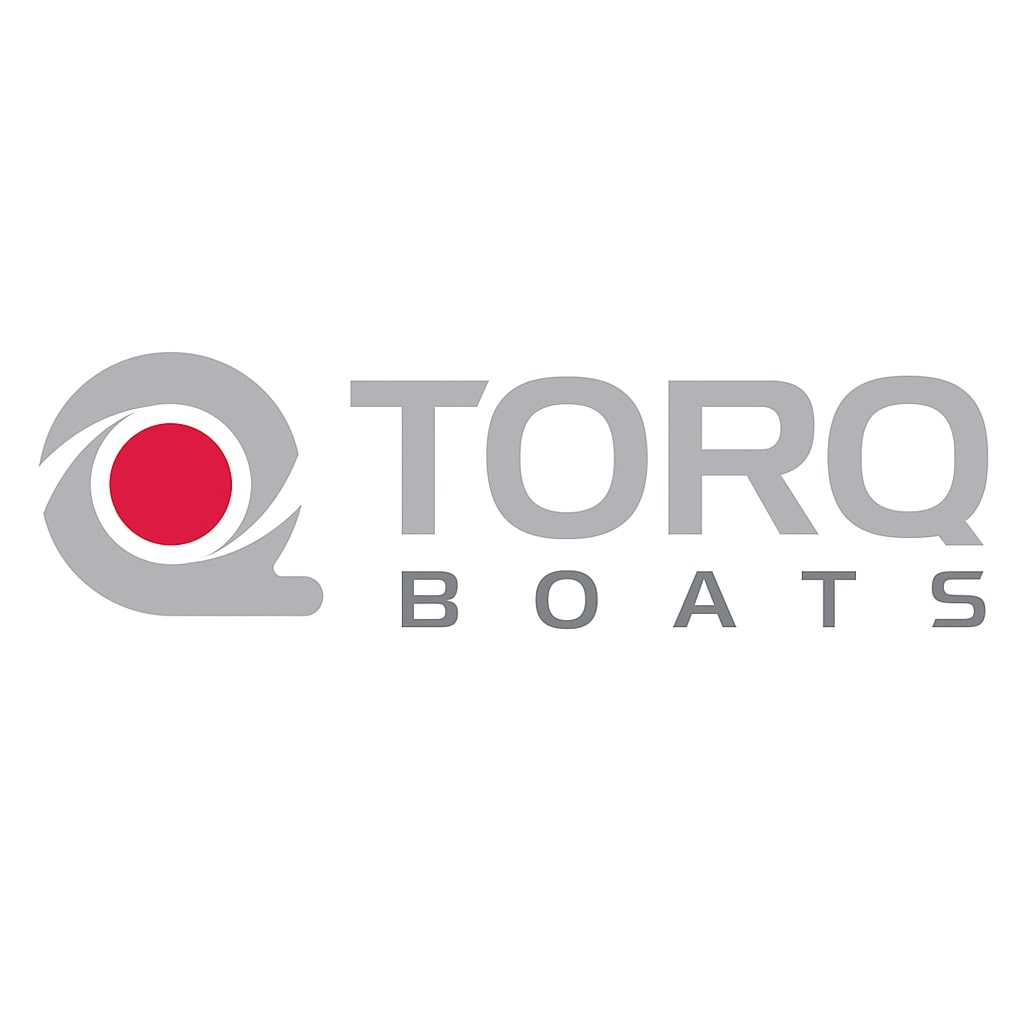

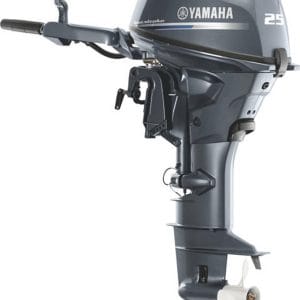
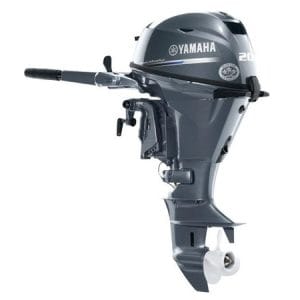
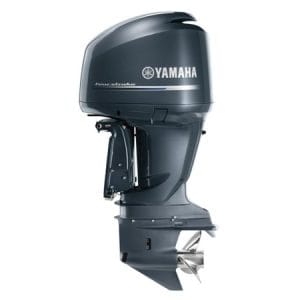
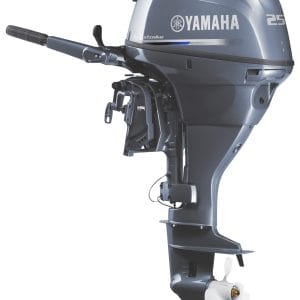
Reviews
There are no reviews yet.